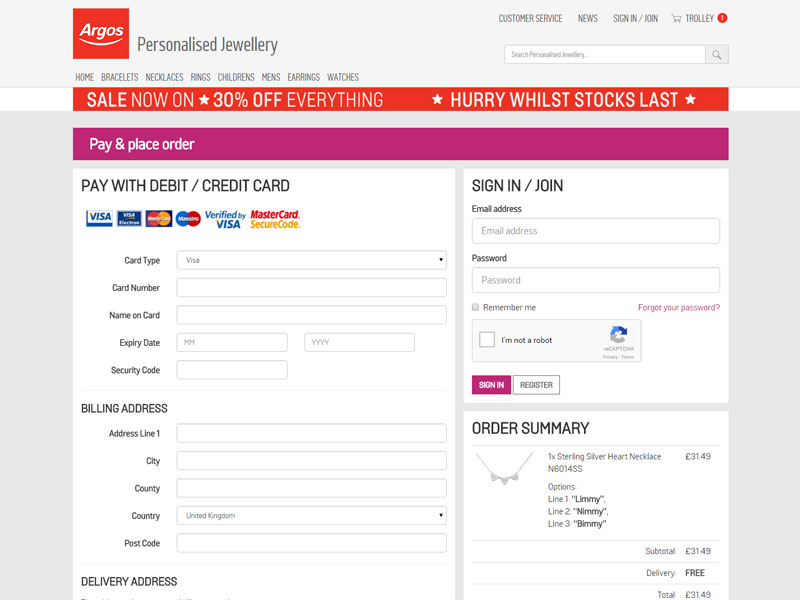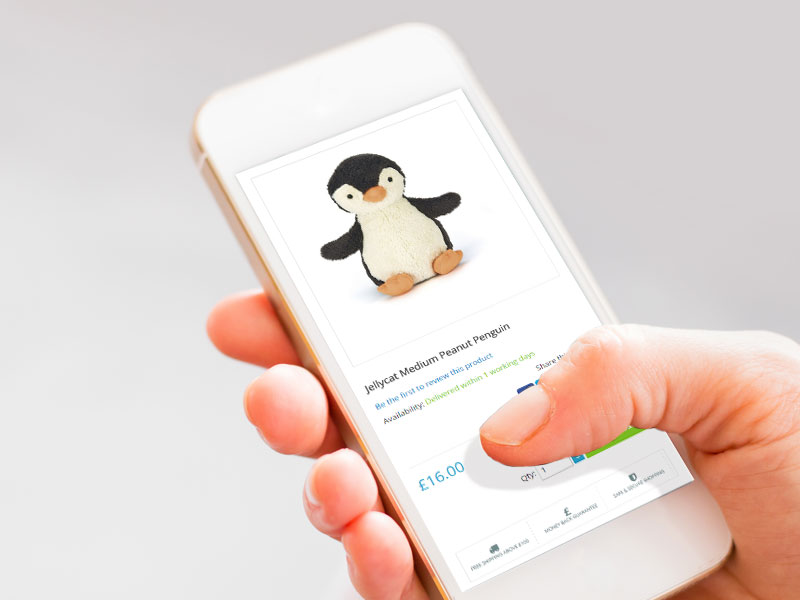When it comes to e-commerce, adigi believes success lies within 10 simple but effective best-practices to create a successful website.
- Simplicity is key – create the perfect user experience by keeping everything simple and clean, cluttering a website withunnecessary jargon could cause disinterest- allow a customer to view your website, view and read about the product, and then easily purchase it. Create easy to navigate pages and clear search bars to ensure browsing your website and finding individual products are as easy as possible.
- Make sure your checkout is streamlined and simple. If a customer clicks on their basket, and it doesn’t immediately take them to a terminal from which they can purchase their item, they may get tired and use a different site. I’m sure everyone has been on a website with no capacity to easily checkout, or the process keeps refreshing itself- remember how frustrating this can be, and ensure your website doesn’t allow people to think like this. In a shop, there is a sales assistant lend help and advice and lead someone to at till to process their sale; it is just as important on an online capacity for a customer to be led through the process to ensure the completion of their sale. Little Star Co. are a online and in store baby boutique and we were pleased to create their website. As you can see, the ‘Add to Cart’ button is prominent in a bright colour, and immediately upon placing the item in your cart, your cart pops down and you can see exactly what products are placed there, and a basket total.

- SEO – Every online retailer is aware of the importance of SEO (Search Engine Optimisation.) Markets are increasingly competitive, standing out from the crowd is of more importance than ever, therefore staying on top of your SEO is imperative for standing out from your competition.
- Keep improving! As technology develops and markets keep becoming more competitive, it is important your website is at the forefront of this. The world of eCommerce evolves rapidly, as new tools and practices are available, keep up to date or your business could be under- performing.
- Remember function is more important than form. Your design team could produce a beautiful website, but if it isn’t clear how it works, products won’t sell. Ensure designers haven’t removed some obvious buttons to make it more aesthetically pleasing- beautiful websites in hindsight haven’t always proved a success. Whilst working on a website for Speedy Stamps, adigi built and coded a new flash based stamp designer which allows companies and individuals to upload logos and text. The new flash designer generates in real time a design that can then be sent for production by the Speedy team generating an SVG file. The process, as seen below, is easy to navigate, fully functional, and is without any distracting frills which confuse cusomers- in a click of a few buttons the process is complete- it is easy and practical which promote sales of the item.
- Ensure your website is user focused. There is a growing recognition that shopping is no longer a straightforward process, it is now omni-channel wherein three sales channels- brick and mortar, online and mobile all blend into a seamless channel geared towards the sale of a product. A customer can physically see and try on products in a shop and so an online business must compete with this by showing their products in the best light. Make descriptions as in depth as possible including dimensions of the products, ensure photos are professionally taken in good lighting- perhaps a 360 degree interactive image could be shown to show all aspects. Asos, a clothing brand, are a great example of this, videos are available of all their products as models wear their clothes to walk down a short catwalk. It ensures customers can see how the garment looks in a more realistic space- knowing what to expect when it comes through the postbox, of any product, promotes sales. Recently we have created a website for personalised jewellery for Argos. We focused heavily on a positive user experience, providing photos of the pieces from every angle, and showing a stylistically clean side bar where a customer can pick their size, easily write a message to be engraved on the ring, and then quickly add it to their basket. There is little room for error on the customers part, and almost no room for confusion- easily visible is the product, the price, the delivery detail and the engraving option- this decreases the chance of a customer becoming frustrated and abandoning the sale.
- Test it. Invest in testing and analytics – get in the mindset of a customer and see what does and doesn’t work on your site, enhance the good points and fix the bad. There are many A/B testing tools to help improve conversions, some of the best A/B testing tools have been summarised in this article.
- Go Mobile. I wrote above about omni-channel sales campaigns- mobile is quickly gaining in sales power and it is imperative to ensure your website is responsive so it is easy to navigate on a mobile device or tablet to promote sales. In 2015, the trend became even more evident as mobile overtook desktop in regards to mobile digital media time, all businesses need to recognise this booming trend and alter their website to ensure they are benefitting from it.

- Complement the website with social media and content marketing strategies. Plan the content you wish to put out in advance, and always link back to your website. The social shouldn’t be too heavily product led as consumers can easily unfollow your account if they feel bombarded, but brand awareness is important and with such high engagement available on social media, creating a brand online is important. It is also a great way for you to have a direct channel with your customers- building a relationship with them promotes customer loyalty, and also lets you see where you’re going right- and more importantly, wrong.
- Online overseas sales. Growth is key to business, and chances are, you’re wanting to have the option to sell to overseas customers. Matthias Heutger, Senior vice President strategy, marketing and innovation for DHL Customer Solutions and Innovation said, “within the next three years, most of the world’s population, 90 percent, will have fast mobile Internet connection, and today more of us are browsing and buying online.” Be aware of your pricing- if your product is £20, converted into Euros, this would equate to €27.32 – if the product is available in their home country for €25 including postage, it is unlikely a consumer would order from your website; convert your prices, check your markets, then alter accordingly. Additionally, if a customer can see you ship to their country and are interested in purchasing your product, only half the battle has been won- online conversions are easy, but as stated previously, a streamlined checkout is key- at this stage if they become confused with exchange rates or unclear shipping costs, they may opt to abandon their cart and purchase elsewhere. To avoid this, many businesses choose to set prices in currencies country by country. Translating the descriptions of products into native languages would also be a huge step to preventing confusion.




